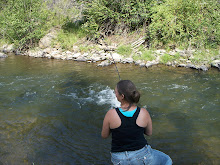Traveling Caravan Entry #1
Tuesday, June 25, 2013]
Topic:
Allegheny Portage Railroad
Today
I had the opportunity to visit the Allegheny Portage Railroad one of
Pennsylvania’s many National Historic Sites. It is located in Cresson, Pennsylvania. It is now 10:00 pm and about twelve
hours ago if anyone would have asked me about the Allegheny Portage Railroad I
wouldn’t have had a clue as to what it was or why it is famous. However, the historic sight was filled
with fantastic information and I would certainly like to share if with my first
grade students this coming school year.
First
grade students, like anyone, are always intrigued by information they can
relate too. In this lesson the students will relate too modes of transportation
they are familiar with and at the same time learn about modes of transportation
they might never have heard of before (DOK 2). Students can
relate to traveling short distances by walking, running, bicycling, or taking a
motorized vehicle, such as a car or truck. Some students, maybe not all, might be able to relate to
traveling further distances by motorized vehicles such as a car or truck, bus,
or airplane. However, when
Allegheny Portage Railroad is first mentioned in class I am sure the students
are going to give me a blank look.
(Content)
As a whole group the students will categorize
transportation they are familiar with (DOK 2). We will split
them into two groups:
Transportation we use Today and Transportation we use Long Ago. Transportation we use Today cars,
trucks, vans, jeeps, motorcycles, trains, boats, and airplanes. Transportation from Long Ago would be
walking, horses, horse and buggy, bicycles, trolleys, trains, boats and the
canal system, which included canals, railroads, and incline planes.
The students attention will be
drawn too the distance from Philadelphia to Pittsburgh, which is about 400
miles. Back in early 1800’s the
only way to get from Philadelphia to Pittsburgh and vice versa was by taking a
covered wagon, which would take them 30 days. However, in 1834 the Allegheny
Portage Railroad was completed.
Now that 30 day trip from Philadelphia to Pittsburgh was shortened to 3
to 5 days. This railroad used a
combination of vehicles - canal boats, railroad cars, and incline planes.
Students
will be shown pictures from my trip of the canal boats, railroad cars, and
incline planes along with a diagram the students must label as we are talking
about the different sections (DOK
1). A map will also be
handed out in which the students will create a key that shows the Philadelphia
to Pittsburgh route in the early 1800’s and 1834 through 1854. They will also draw conclusions the
amount of time it takes to travel (DOK 3).
We are fortunate to live close to the Susquehanna River in
Northumberland County. It would be
cool find a section on the river to do and time the following:
1. Walk
2. Horse and Buggy (Amish in the
community)
3. Boat.
Then the students would analyze how long it took each form
of transportation and which one was the quickest (DOK 4).
In this study they would find the boat would be the quickest mode of
transportation. (Creative Activity)
Standards: 8.3.1.c;
6.2.6.A; 6.4.6.D; cc.2.4.1.A.4

Neat simulation to help students understand the time it takes to travel with the different modes of transportation. Another point to bring up would be--why was it necessary to travel faster?--not just for convenience but goods travel faster for "freshness" of the product and more money can be made when more shipments can be sent in shorter periods of time.
ReplyDeleteGreat advice. Freshness is a very important key. Today all kids know is put it in the fridge.
ReplyDeleteYou could also have them compare walking versus riding their bike/scooter/skateboard, depending on what is common in your community. Sneaks in a little bit of simple machinery and measuring time/distance.
ReplyDelete